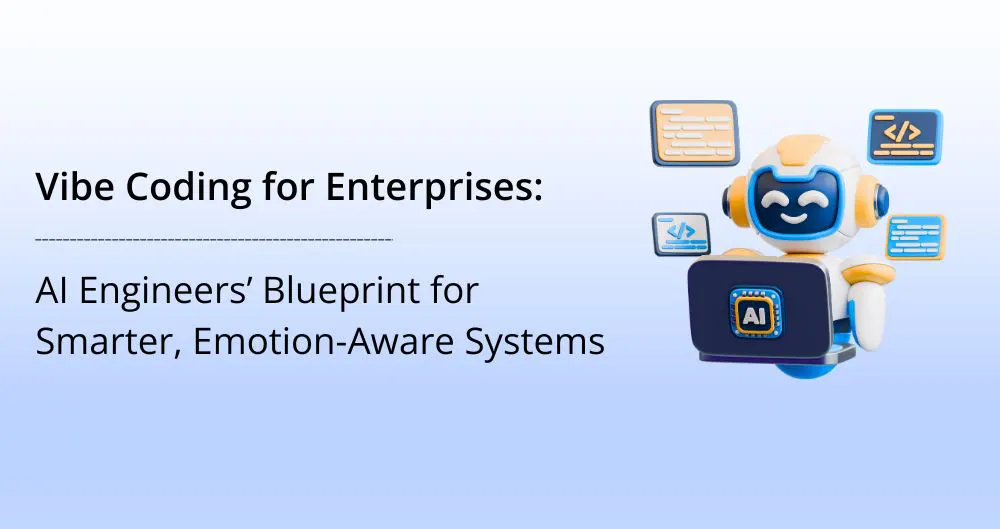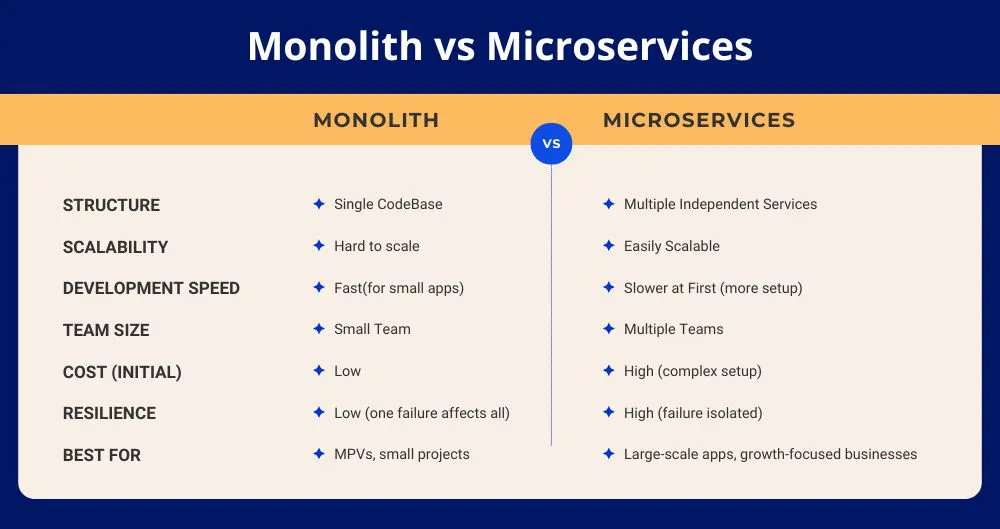April 22, 2025
What is Conversational AI in Healthcare
Conversational AI in healthcare uses advanced natural language processing to enable natural interactions with patients and stakeholders through chatbots, virtual assistants, or voice interfaces. Unlike traditional rule-based systems, it automates tasks with greater flexibility and intelligence.
Highlights
Conversational AI improves user experience, enabling more natural and flexible interactions.
Successful adoption requires clean data, strong tech infrastructure, and a clear risk mitigation plan.
The healthcare system is under pressure from rising costs, staff shortages, and increasing patient demand. In this context, conversational AI emerges as a promising solution to ease the strain.
However, providers must look beyond hype and focus on durable, effective tools. Let’s explore the conversational AI solutions built to last.

Key Differences: Conversational AI vs. Rule-Based Chatbots
| Feature | Rule-Based Chatbots | Conversational AI Interfaces |
|---|---|---|
| Task | Navigation-focused | Dialog-focused |
| Input Data | Cannot process unstructured data | Leverages unstructured data for richer responses |
| Language Understanding | Scripted, limited context awareness | Understands nuance and context with NLP |
| Response Generation | Predefined, rigid | Dynamic, adaptable to various queries |
| Adaptation | Minimal learning, manual updates | Learns continuously via machine learning |
| Personalization | Generic responses | Tailored interactions based on user history |
| Interaction Complexity | Handles simple, linear queries | Manages complex, multi-turn conversations |
| Deployment Flexibility | Task-specific | General-purpose, scalable across healthcare settings |
Proven benefits of healthcare Conversational AI
Over 70% of top healthcare organizations are exploring or scaling generative AI — a key driver of conversational AI — across their operations. Let’s explore the benefits they can start realizing from these solutions.
Enabling Patient Self-Service
Nearly 29% of Americans avoid needed medical care due to cost, stigma, or provider shortages. Conversational AI empowers patients to manage their health independently by removing access barriers.
From mental health support to scheduling and medication reminders, these AI systems assist patients directly, providing guidance even when healthcare resources are limited.
Driving Administrative Cost-Efficiency
About 60% of healthcare leaders see administrative efficiency as a key area for generative AI impact. Conversational agents can streamline data extraction, record management, and workflows tied to revenue cycles, reporting, and approvals.
Automating these processes could reduce healthcare spending by 15% to 25%.
Making Patient Feel Heard
Traditional IVRs and support systems often frustrate patients with long waits, poor context, and low issue resolution. Conversational AI changes that leverage patient data, past interactions, and real-time context to deliver more human-like support and ease the burden on staff.
“
— Shehzad Ali, AI Lead Engineer, Techzooni
From Code to Cure: 10 Ways Conversational AI is Transforming Healthcare
As challenges mount across the healthcare sector, there’s a growing opportunity for private payers, hospitals, and labs to lead with conversational AI. Here’s how this technology is set to reshape the system for the better.
1. Appointment Scheduling
Conversational AI can not only make care easier to find but also easier to schedule. Available 24/7, AI appointment setters and schedulers align patients’ needs with provider-specific data to bring forth a speedier search and scheduling experience.
Along with scheduling appointments, conversational AI interfaces can:
- Offer a self-reschedule path to patients and alternative time slots.
- Update patients on the time and location of the upcoming appointment.
- Automatically serve canceled appointments to other patients on the waitlist.
- Sync online appointments, digital forms, insurance verification, payments, and patient interactions.
We strategically implemented a conversational AI interface to minimize appointment no-shows and ensure calendars stayed consistently full with less manual effort. This solution led to a 34% reduction in missed appointments and significantly improved our ability to guide patients to the appropriate care, at the right location and time.
— Head of Patient Services, Dermatology Clinic, Los Angeles
2. Medical Triaging
In the U.S., primary care physicians handle an average of 53 patient calls daily, many of which don’t require urgent medical attention. Conversational AI offers a solution by streamlining patient triage, assessing symptoms, and directing individuals to the appropriate level of care. With the right prompts, AI chatbots can even outperform doctors in diagnosing certain conditions.
Integrating conversational AI into the triage process enables healthcare providers to establish intelligent, self-service entry points for patients. These systems can:
– Collect symptoms and suggest potential diagnoses
– Recommend the most clinically appropriate care based on patient input
– Automate referrals, appointment scheduling, and care coordination
– Sync with internal systems to provide triage nurses with key patient data
– Escalate to human assistance quickly when urgent care is needed or requested
3. Clinical Decision Support
When it comes to clinical decision-making, accuracy is everything. Doctors need to consider a patient’s unique context, align it with clinical guidelines, and consult the latest research — all before making a treatment call. But this isn’t a quick process. In fact, it can take hours, and even then, there’s a risk of missing critical details. The result? Delayed interventions or inappropriate treatments that could’ve been avoided.
This growing complexity is one reason 76% of doctors now report using general-purpose large language models (LLMs) to support their clinical decisions. While these tools can be powerful, they’re not always built with patient safety or medical precision in mind. That’s where healthcare-specific conversational AI comes in.
These purpose-built tools are designed to work alongside clinicians, offering real-time, evidence-based insights at the point of care. Rather than replacing human expertise, they amplify it — helping physicians make more informed decisions, faster.
Imagine an AI assistant that can:
- Recommend dosing based on a patient’s age, weight, and health history.
- Flag potential drug interactions or contraindications
- Identify high-risk patients who need urgent intervention
- Suggest personalized treatment paths based on comorbidities and allergies
One standout example is ChatRWD by Atropos Health — a medical language model designed specifically for healthcare. It combines natural language chat with direct access to clinical databases, drastically reducing the time needed to generate publication-grade, real-world evidence. What used to take months now takes just over five minutes.
In a world where clinical evidence is growing exponentially, and time is often a matter of life or death, tools like this are more than convenient — they’re essential.
4. Remote Patient Monitoring
Remote Patient Monitoring (RPM) has long held promise for improving chronic disease management, but it hasn’t been without challenges. From managing logistics to sorting through mountains of patient data, RPM often feels like more work than it’s worth for both patients and providers.
That’s changing with the rise of conversational AI, especially multimodal agents that can interact through voice, text, and even video. These AI-powered systems bring structure and simplicity to RPM, making it easier to track patients’ health beyond the walls of a clinic.
With a human-in-the-loop for oversight, these smart agents can:
-
Conduct automated check-ins and symptom screenings via phone or browser
-
Provide real-time updates on patient progress and red flags
-
Track treatment adherence and surface patterns in behavior or risk factors
The result? Clinicians get actionable insights without the noise, and patients feel supported without being overwhelmed. It’s a win-win, especially for chronic care scenarios where consistency and early intervention are key.
By turning passive data into meaningful conversations, conversational AI is transforming RPM from a complex backend operation into an intuitive, proactive care experience.
5. Smarter Post-Visit Support with Conversational AI
Many patients leave appointments unsure of what to do next — confused by medical jargon, disconnected care steps, or unclear billing. Conversational AI can fill this gap, offering clear, personalized guidance after a visit or discharge.
These systems can:
-
Turn visit notes and insurance details into simple action plans
-
Summarize referrals and unify health records, lab results, and clinical notes
-
Highlight key info from specialist visits for primary care teams
-
Estimate out-of-pocket costs and explain insurance coverage
By breaking down complex information into easy-to-follow conversations, conversational AI keeps patients informed, engaged, and on track with their care.
6. Medication Management
Medication adherence is a major challenge — only about half of patients follow their prescriptions correctly, and many are unsure of what to do next. For those on multiple medications, the complexity can be overwhelming.
Conversational AI can simplify this process for everyone involved. Virtual assistants can:
-
Explain prescriptions clearly, including dosage, timing, and side effects
-
Send refill reminders and flag potential drug interactions
-
Help pharmacists reconcile medication lists to prevent errors
-
Support doctors with evidence-based prescribing and dosage guidance
By making medication info accessible and actionable, AI helps improve adherence, safety, and outcomes.
7. Reimbursement
Healthcare reimbursement is notoriously complex — from denied claims to confusing codes and slow billing. Conversational AI can help streamline the process through smart automation.
AI-powered assistants can:
-
Prioritize claims and auto-generate payer follow-ups using physician notes
-
Submit and track insurance claims
-
Verify medical codes for better accuracy
-
Spot appeal opportunities by analyzing payer contracts
-
Monitor payments and flag delays
-
Guide patients through billing, coverage, and payment options
By reducing friction in the reimbursement process, AI helps both providers and patients navigate billing with less hassle.
8. Streamlining Clinical Operations with AI
Doctors today spend more time on admin work than with patients — often buried in repetitive tasks like post-visit notes and form filling. Conversational AI can take on much of this clerical load, freeing up valuable time.
These tools can:
-
Generate visit summaries, referral notes, consent forms, and reports
-
Create and organize clinical notes, EMR updates, and messages
-
Support workflow planning and clinician training
-
Assist during visits by transcribing and structuring clinician notes in real time
By automating routine documentation, conversational AI helps clinicians focus more on care and less on clicks.
9. Enhancing Clinical Trials with Conversational AI
As decentralized clinical trials rise and traditional trials struggle with patient retention, conversational AI offers a powerful assist.
These AI agents can:
-
Screen participants based on eligibility
-
Integrate trial data with labs, images, and fill in gaps
-
Guide patients through the process to reduce dropouts
-
Match patients with the right treatments or drug combinations
-
Extract key data from reports for FDA documentation
By automating complex trial tasks, conversational AI accelerates research while improving accuracy and engagement.
10. Automating Back-Office Operations with Conversational AI
Behind every hospital is a web of administrative tasks — from HR and finance to legal and compliance. Yet, many of these processes remain siloed and manual, increasing the risk of errors and inefficiencies.
Conversational AI can streamline back-office operations by:
-
Automating onboarding, HR self-service, and feedback collection
-
Optimizing staff schedules based on skills and workload
-
Handling invoices, payments, and account reconciliation
-
Validating contracts for legal and regulatory compliance
-
Keeping teams updated on policy and regulation changes
With AI handling the repetitive work, healthcare systems can run smoother, faster, and with fewer errors.
Wrapping Up: From Code to Care
Conversational AI is no longer just a futuristic concept — it’s a practical, scalable tool that’s reshaping how healthcare is delivered, managed, and experienced. From triage and treatment to billing and back-office work, these intelligent systems are streamlining operations, reducing burnout, and making care more accessible and efficient.
By embedding conversational AI across the care continuum, healthcare providers can focus more on what matters most: delivering high-quality, human-centered care — while letting AI handle the rest.
The future of healthcare isn’t just digital — it’s conversational.
Frequently Asked Questions
1. How is AI used in oil and gas?
2. How generative AI is used in oil and gas?
3. Which oil companies are using AI?
Table of Contents
- What is Conversational AI in Healthcare
- Highlights
- Proven benefits of healthcare Conversational AI
- From Code to Cure: 10 Ways Conversational AI is Transforming Healthcare
- Wrapping Up: From Code to Care
- Frequently Asked Questions
- Related Articles
- Vibe Coding for Enterprises: AI Engineers’ Blueprint for Smarter, Emotion-Aware Systems
- Microservices vs Monolith: Which Architecture is Right for Your Project?
- Avoiding Pitfalls: Why Enterprise Projects Fail and How to Stop It

Why Trust Techzooni?
🤖 Proven Expertise in AI Development
🔒 Secure and Scalable Solutions
🌐 End-to-End Support from Concept to Execution
📈 Data-Driven Decisions for Better Business Outcomes
With Techzooni, you can trust that your AI initiatives will be handled with care, precision, and innovation.
Related Articles
Vibe Coding for Enterprises: AI Engineers’ Blueprint for Smarter, Emotion-Aware Systems
Imagine a future where building software feels a bit like having a conversation. You tell your system what you want in plain English. Behind the scenes, intelligent agents spin up code, run tests, refactor, and even suggest improvements. That’s the world of vibe...
Microservices vs Monolith: Which Architecture is Right for Your Project?
Imagine that you’re opening a new restaurant. You could either rent one big hall where the kitchen, storage, and dining all happen in the same space—or you could design separate sections: a kitchen, a pantry, a dining area, and a drive-thru. Both setups can serve...
Avoiding Pitfalls: Why Enterprise Projects Fail and How to Stop It
Every successful software project starts with one key step: understanding why so many others fail. Large-scale enterprise initiatives are ambitious, but they often run into hurdles that derail progress. Research from Deloitte shows just how common this is. Among...



